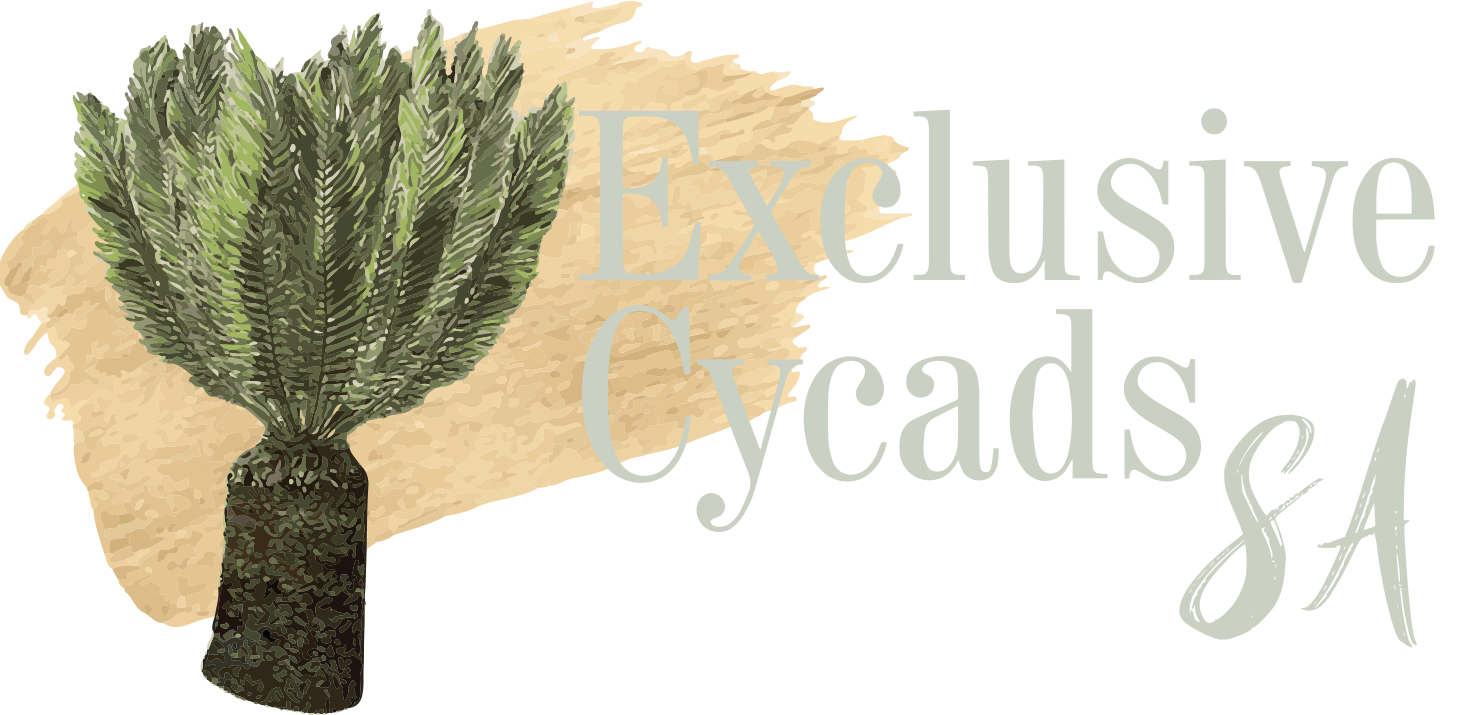A group of these plants was found in the vicinity of the Strijdom Tunnel in Blyde river Canyon. These plants have certain characteristics that correlate with E.paucidentatus. The most obvious similarities are the prominent longitudinal ridges at the back of the leaflets.
I believe this is the main reason why people associate this plant with E. paucidentatus. The striking difference between the stems is the massive amount of golden-brown wool on the stem apex.Plants that can also be confused with these plants are E. transvenosus, which also have brown wool in the crown but not nearly the amount in these plants. The E. transvenosus that is growing within a 100 km radius of this locality has a totally different look with the leaves of the E. transvenosus having a more rounded canopy.
The leaves are straight with a dark green colour on the upper side and a lighter green on the lower side. Leaflets shield one another incubously in the distal part of the leaf and succubously in the proximal half of the leaf.
The leaflets of E. transvenosus shield one another incubously through the whole leaf and with E. paucidentatus there is no shielding of leaflets.
The s-angle of the leaflets is 20˚ – 45˚ at the base of the leaves and -10˚ – 0˚ at the distal end of the leaves. The lower edges of the leaflets have two to five teeth with the proximal leaflets having prominent lobes at the lower edge, which give these plants a unique appearance from above.
Leaflets at the base decrease in size with pungent lobes with no prickles on the petiole. The petiole is dark green in contrast with the more yellowish petioles of E.paucidentatus and E. transvenosus. The leaves are very rigid and the leaflets much thicker and harder than leaflets of E. paucedentatus or E. transvenosus. The cones of these plants are strikingly different in appearance – both in colour and size.
NATURAL HABITAT:
- A group of these plants was found in the vicinity of the
Strijdom Tunnel in Blyde river Canyon.
STEM:
-
These plants have certain characteristics that correlate with E.paucidentatus.The striking difference between the stems is the massive amount of golden-brown wool on the stem apex.
Distinct copious amount of wool on the crown.

LEAVES:
- The leaves are straight with a dark green colour on the upper side and a lighter green on the lower side.
- Leaflets shield one another incubously in the distal part of the leaf and succubously in the proximal half of the leaf.
- The leaflets of E. transvenosus shield one another incubously through the whole leaf and with E. paucidentatus there is no shielding of leaflets.
- The s-angle of the leaflets is 20˚ – 45˚ at the base of the leaves and -10˚ – 0˚ at the distal end of the leaves.
- The lower edges of the leaflets have two to five teeth with the proximal leaflets having prominent lobes at the lower edge, which give these plants a unique appearance from above.
- Leaflets at the base decrease in size with pungent lobes with no prickles on the petiole.
- The petiole is dark green in contrast with the more yellowish petioles of E.paucidentatus and E. transvenosus.
- The leaves are very rigid and the leaflets much thicker and harder than leaflets of E. paucedentatus or E. transvenosus.
Backview of leaflet with prominent ridges.

Backview of leaflet with prominent ridges.

CONES:
- The cones of these plants are strikingly different in appearance – both in colour and size.
Male Cone






